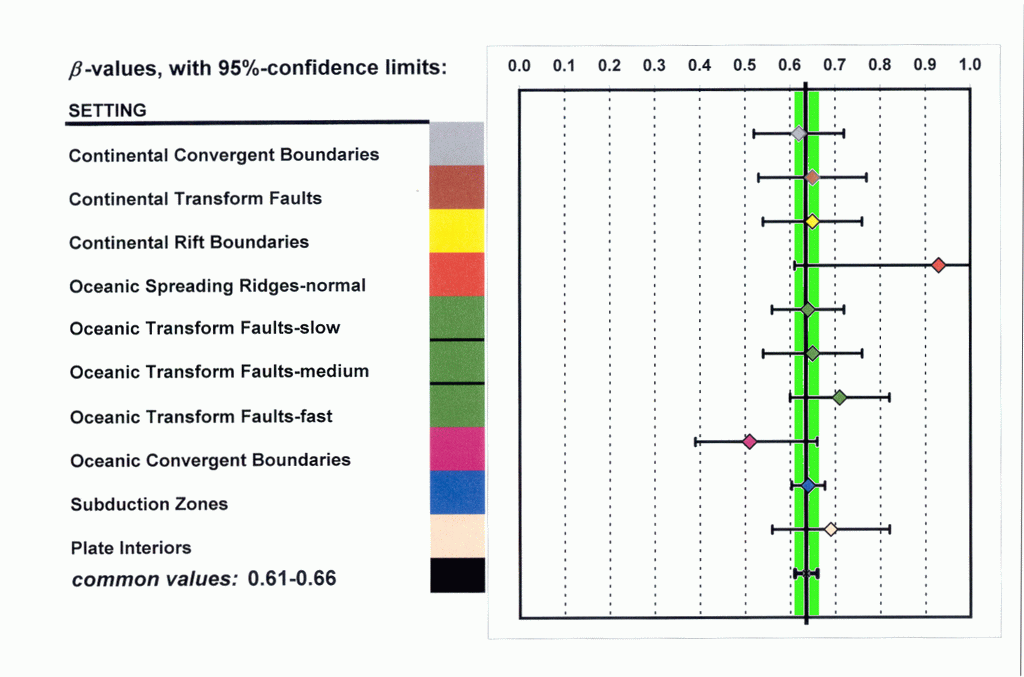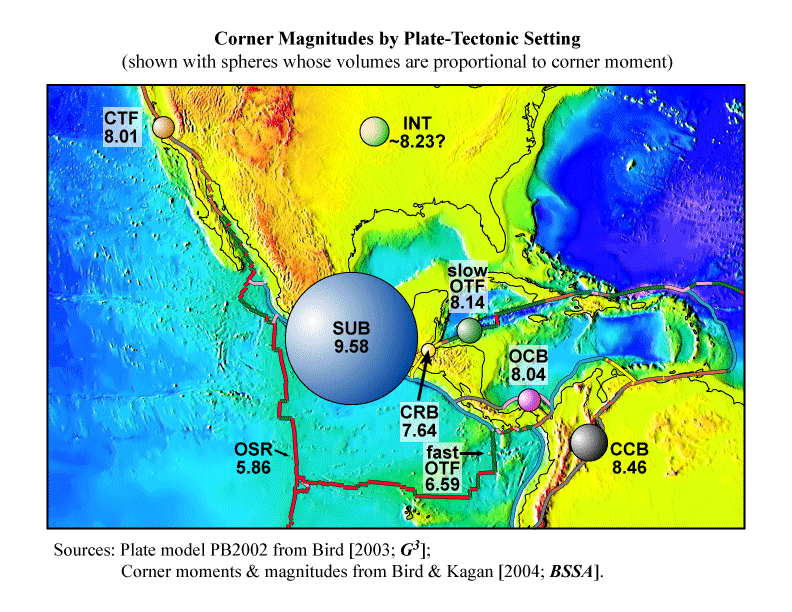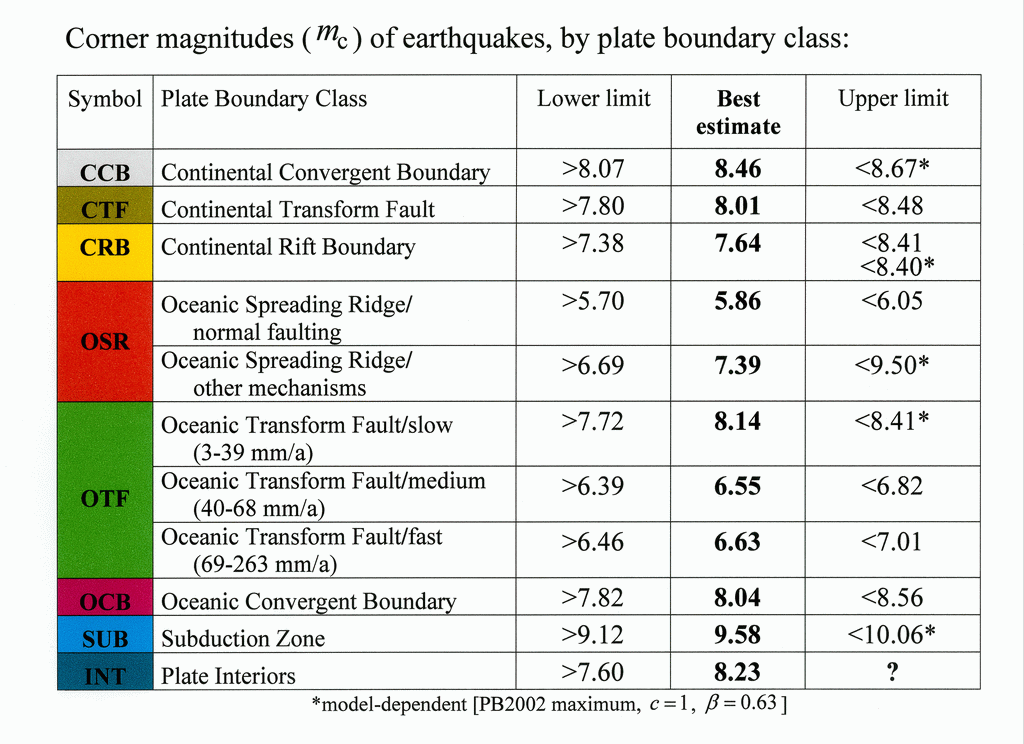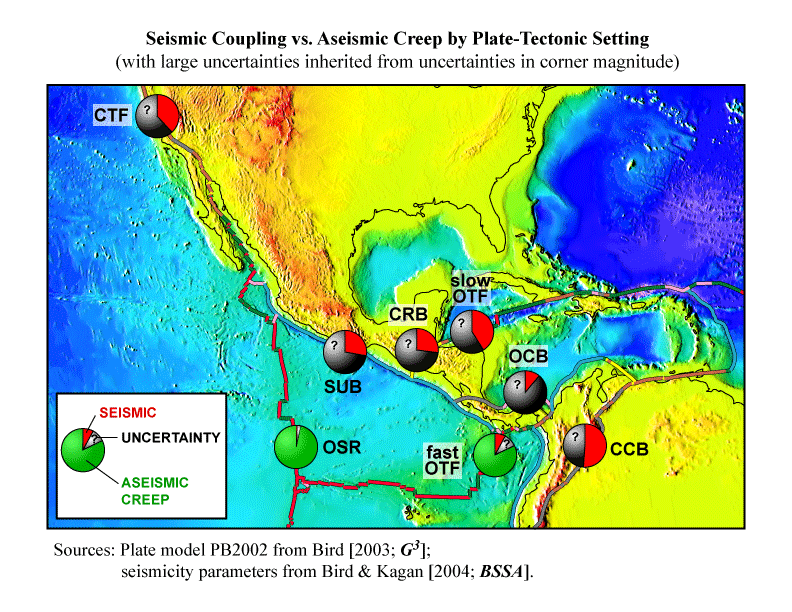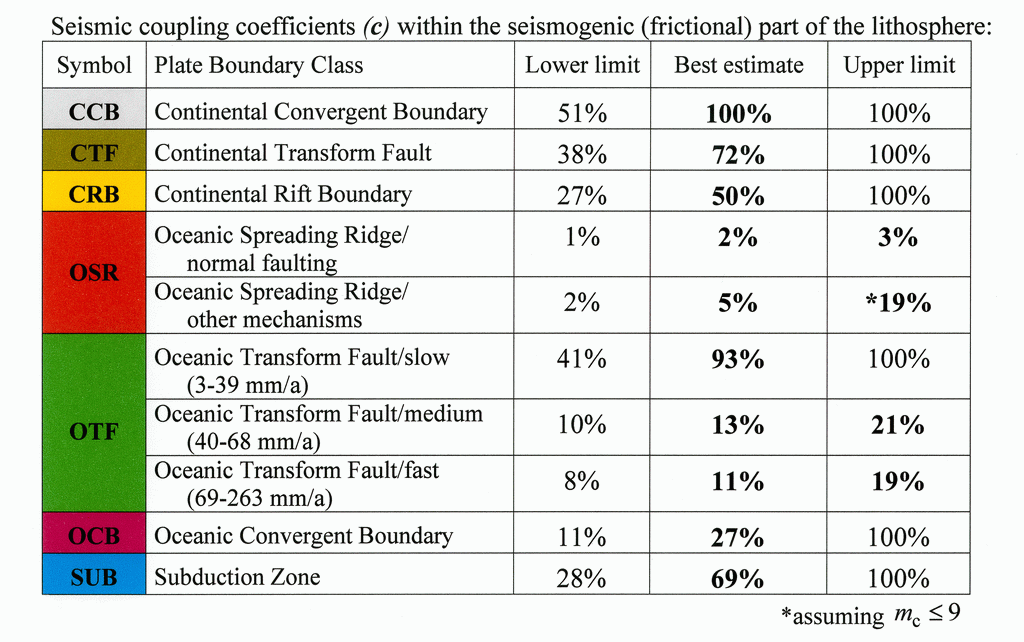51. Bird, P., and Y. Y. Kagan (2004) Plate-tectonic analysis of shallow seismicity: Apparent boundary width, beta, corner magnitude, coupled lithosphere thickness, and coupling in seven tectonic settings, Bull. Seismol. Soc. Am., 94(6), 2380-2399, plus electronic supplement, 2004.
Abstract. A new plate model is used to analyze the mean seismicities
of seven types of plate boundary (CRB continental rift boundary, CTF
continental transform fault, CCB continental convergent boundary, OSR oceanic
spreading ridge, OTF oceanic transform fault, OCB oceanic convergent boundary,
SUB subduction zone). We compare the plate-like (non-orogen) regions of model
PB2002 [Bird, 2003] with the CMT catalog
to select apparent boundary half-widths, and then assign 95% of shallow
earthquakes to one of these settings. A tapered Gutenberg-Richter model of the
frequency/moment relation is fit to the subcatalog for each setting by
maximum-likelihood. Best-fitting b values range from 0.53 to 0.92, but all
95%-confidence ranges are consistent with a common value of 0.61-0.66. To
better determine some corner magnitudes we expand the subcatalogs by: (1)
inclusion of orogens; and (2) inclusion of years 1900-1975 from the catalog of Pacheco & Sykes [1992]). Combining
both earthquake statistics and the plate-tectonic constraint on moment rate,
corner magnitudes include: CRB ![]() ,
CTF
,
CTF ![]() ,
CCB
,
CCB ![]() ,
OCB
,
OCB ![]() ,
and SUB
,
and SUB ![]() .
Coupled lithosphere thicknesses are found to be: CRB
.
Coupled lithosphere thicknesses are found to be: CRB ![]() km; CTF
km; CTF ![]() km; CCB
km; CCB ![]() km; OSR
km; OSR ![]() km for normal-faulting and
km for normal-faulting and ![]() km for strike-slip; OTF
km for strike-slip; OTF ![]() ,
,
![]() , and
, and ![]() km at low, medium, and
high velocities; OCB
km at low, medium, and
high velocities; OCB ![]() km, and SUB
km, and SUB ![]() km. Generally high coupling of subduction and
continental plate boundaries suggests that here all seismic gaps are dangerous
unless proven to be creeping. Generally low coupling within oceanic lithosphere
suggests a different model of isolated seismic fault patches surrounded by
large seismic gaps which may be permanent.
km. Generally high coupling of subduction and
continental plate boundaries suggests that here all seismic gaps are dangerous
unless proven to be creeping. Generally low coupling within oceanic lithosphere
suggests a different model of isolated seismic fault patches surrounded by
large seismic gaps which may be permanent.
Guided tour of e-supplement (linked HTML pages)
Browse directories of e-supplement
P.S. This study was published just a few days before the great m = 9.03 Banda Aceh earthquake of 2004.12.26. It is natural to ask, whether that event requires re-examining any of our conclusions? As the table below shows, addition of one m = 9.03 event to each of the subduction-zone (SUB) catalogs we analyzed will affect the apparent corner magnitude:
|
|
SUBduction zone corner magnitudes: |
|
|
|
Harvard CMT subcatalog |
merged 20th-century subcatalog |
|
as published (in Table 3): |
|
|
|
with addition of one m = 9.03 subduction-zone earthquake: |
|
|
The effect is to raise the corner magnitude based on the CMT catalog to make it formally consistent (within overlapping confidence limits) with the results based on the merged 20th-century catalog. (Unlike the CMT catalog, the 20th-century catalog already included the great earthquakes of 1952.11.04 [m = 9.00], 1964.03.28 [m = 9.22], and 1960.05.22 [m = 9.64].) Because we chose the higher 20th-century corner magnitude to use in our computations of coupled thickness and coupling, these results would not be significantly changed by including the Banda Aceh earthquake.
